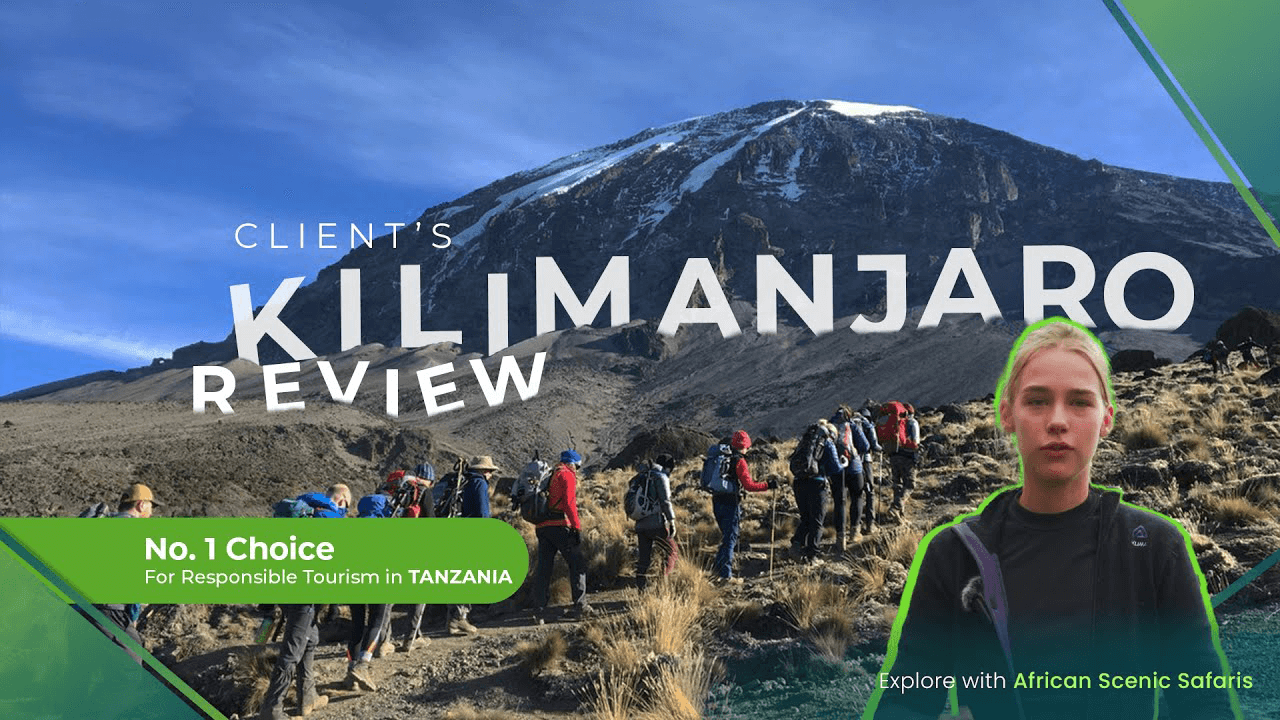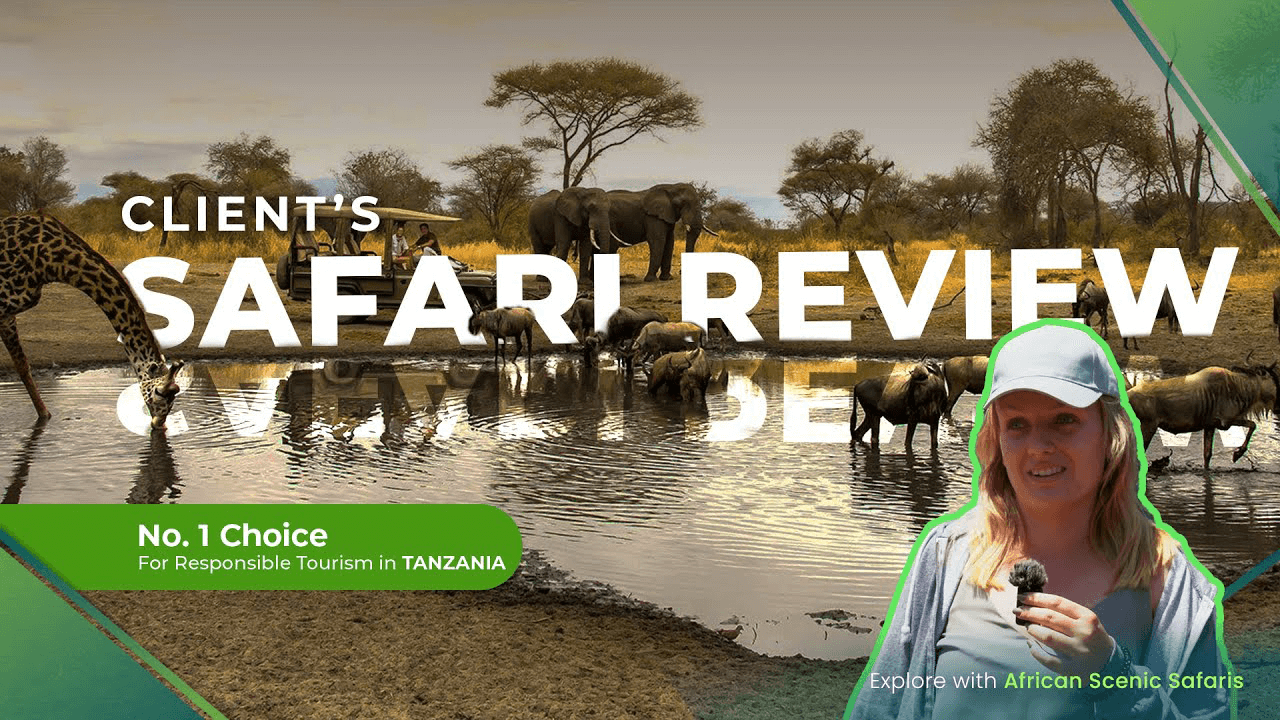Arrival & Briefing
Upon arrival at Kilimanjaro International Airport you will be transferred to your accommodation where your guide will meet you for a full briefing and equipment check.
Overnight Kili Villa
Day 1 : Kili Villa to Momella Gate (1,580m/5,180 ft) to Miriakamba Hut (2,500m/8,200ft)
Elevation Gain: 920m/3,020ft
In the morning you will be transferred to Arusha National Park to register before setting off with your guide and ranger, required because there is an abundance of wildlife in the forests! Walking through the grasslands towards the acacia forest on the southern route, you may spot giraffes and buffalo. After roughly 2 hours you will reach the Maio Falls, where you can enjoy a break, then continue through ‘fig tree arch’. After approximately 4-5 hours of trekking, you will reach a spectacular viewpoint, before heading on to the huts.
Overnight Miriakamba Hut
Day 2 : Miriakamba Hut (2,500m/8,200ft) to Saddle Hut (3,550m/11,650ft)
Elevation Gain: 1,050m/3,450ft
Continue your trek along a steep track reaching “Mgongo wa Tembo” (elephant back) after approximately 2 hours. Low-lying clouds often shroud the rainforest in mist, creating a moody atmosphere. Take in the scenery before heading to Saddle Hut. The vegetation changes from rainforest to heather and moorland. After lunch you may choose to hike Little Meru (3,820m), taking approximately 1½ hours. This is great for acclimatization and, weather permitting, will reward you with fantastic views over Arusha National Park and Kilimanjaro. A warm meal and early night await you back at the huts.
Overnight Saddle Hut
Day 3 : Saddle Hut (3,550m/11,650ft) to Socialist Peak (4,562m/14,968ft) then descending to Miriakamba Hut (2,500m/8,200ft)
Elevation Gain: 1,012m/3,318ft
Elevation Loss: 2,062m/6,768ft
You will be awakened around midnight to start your final ascent. Headlamps light your way as you follow the trail through bush to Rhino Point (3,821m) where the path becomes more challenging. Occasionally some scrambling will be required. Following the crater rim, you will walk on frozen volcanic ash and rocks before reaching the summit after approximately 4 to 5 hours. Enjoy breathtaking views of sunrise behind Kilimanjaro and look deep into Mount Meru’s crater. Start your descent via the same route to Saddle Hut where you can recuperate with hot soup and tea. Once rested, continue to Miriakamba Hut.
Please note, the summit stage contains a few easy but unsecured scrambling passages. A good head for heights and sure-footedness is necessary. In adverse weather conditions, the park ranger may call off the summit attempt.
Overnight Miriakamba Hut
Day 4 : Miriakamba Hut (2,500m/8,200ft) to Momella Gate (1,580m/5,180 ft)
Elevation Loss: 920m/3,020ft
After breakfast starts your final stretch on Meru, via the ‘northern route’ to Momella Gate. On this 2 to 3-hour trek, you may once again be lucky enough to see giraffes, buffalo, and elephants, as well as black and white Colobus monkeys. Arriving at the gate, say farewell to your hiking crew and travel to your accommodation to rest for the night.
Overnight Simba Farm Lodge
Day 5 : Morum Picnic Site (3,410m/11,200ft) to Shira 2 Camp (3,850m/12,650ft)
Elevation Gain: 440m/1,450ft
This morning drive to the Londorossi gate. Complete entry formalities then continue driving for around 1 hour to the Morum Picnic Site, where you will begin your Kilimanjaro hike. There is an excellent chance of spectacular views of the summit cone, Kibo, to whet your appetite! Trek across the Shira Plateau to Shira 1 Camp, where you will enjoy a tasty lunch. Afterward continue across the plateau on a gradual climb to Shira 2 Camp, where you will spend the night. Approximate hiking time 5 – 6 hours.
Overnight Shira 2 Camp
Day 6 : Shira 2 Camp (3,850m/12,650ft) to Barranco Camp (3,900m/12,800ft)
Elevation Gain: 750m/2,400ft
Elevation Loss: 700m/2,300ft
Your climb today will take you steadily up and over the expansive ridgelines of the high desert to Lava Tower at 4,600m. The trek to the base of the tower, a 300-foot-high volcanic plug, takes around 4-5 hours. From here begin a steep descent into the Barranco Valley, passing exotic large flowering plants, Senecio Kilimanjaro. This descent will take 1-2 hours. Although you end your day at almost the same elevation as you started, today is important for acclimatization. Camp is in a beautiful, sheltered valley below the imposing Barranco Wall.
Overnight Barranco Camp
Day 7 : Barranco Camp (3,900m/12,800ft) to Karanga Camp (3,950m/12,960ft)
Elevation Gain: 300m/1,000ft
Elevation Loss: 250m/820ft
Begin the day climbing the Barranco Wall, an impressive scramble that will reward you with fantastic views back towards camp. From the top, at 4,200m, follow an undulating path around the mountainside. On a clear day, there are spectacular views of Kibo to your left and Mount Meru to your right. After descending into the Karanga Valley your climb takes you up a short steep path to camp. Walking time approximately 3-4 hours.
Overnight Karanga Camp
Day 8 : Karanga Camp (3,950m/12,960ft) to Barafu Camp (4,600m/15,090ft)
Elevation Gain: 650m/2,130ft
Spend the morning climbing steadily up to Barafu, which is Swahili for ice! This camp is located on the ridge below the summit cone. You have now completed the South Circuit, which offers views of Kibo from many different angles. This walk will take around 3-4 hours, meaning you’ll arrive at Barafu in time for lunch and a full summit briefing, before spending the afternoon resting. The two peaks of Mawenzi and Kibo can be seen from this position.
Overnight Barafu Camp
Day 9 : Barafu Camp (4,600m/15,090ft) to Uhuru Peak (5,895m/19,340ft) then descending to Mweka Camp (3,110m/10,200ft)
Elevation Gain: 1,295 m/4,250ft
Elevation Loss: 2,785m/9,140ft
In the early hours begin your final ascent to the summit of Kilimanjaro, taking approximately 6-8 hours. It can be very cold at night at these elevations, but it will be warm by the end of the hiking day and you need clothing for both extremes. Just when you think you’ve reached your limit, the sun will rise and you’ll be rewarded with a rich red sky framing Mawenzi. At Stella Point (5,750m) join the crater rim. From here, climb less steeply to Uhuru Peak, the highest point on Mount Kilimanjaro and in Africa. From the summit descend to Mweka Hut, with lunch served on the way, taking around 6 hours. Enjoy your last dinner on the mountain and a well-earned sleep.
Overnight Mweka Hut Camp
Day 10 : Mweka Camp (3,110m/10,200ft) to Mweka Gate (1,830m/6,000ft)
Elevation Loss: 1,280m/4,200ft
Descend to the gate through the lush forest (2-3 hours), looking for monkeys along the way. You will be collected from Mweka Village and taken to your hotel in Moshi.
Overnight Ameg Lodge
Departure or Onwards Travel
Today you will be transferred to Kilimanjaro Airport in time for your flight, or if you’ve decided to extend your Tanzanian adventure, begin the next part of your journey!


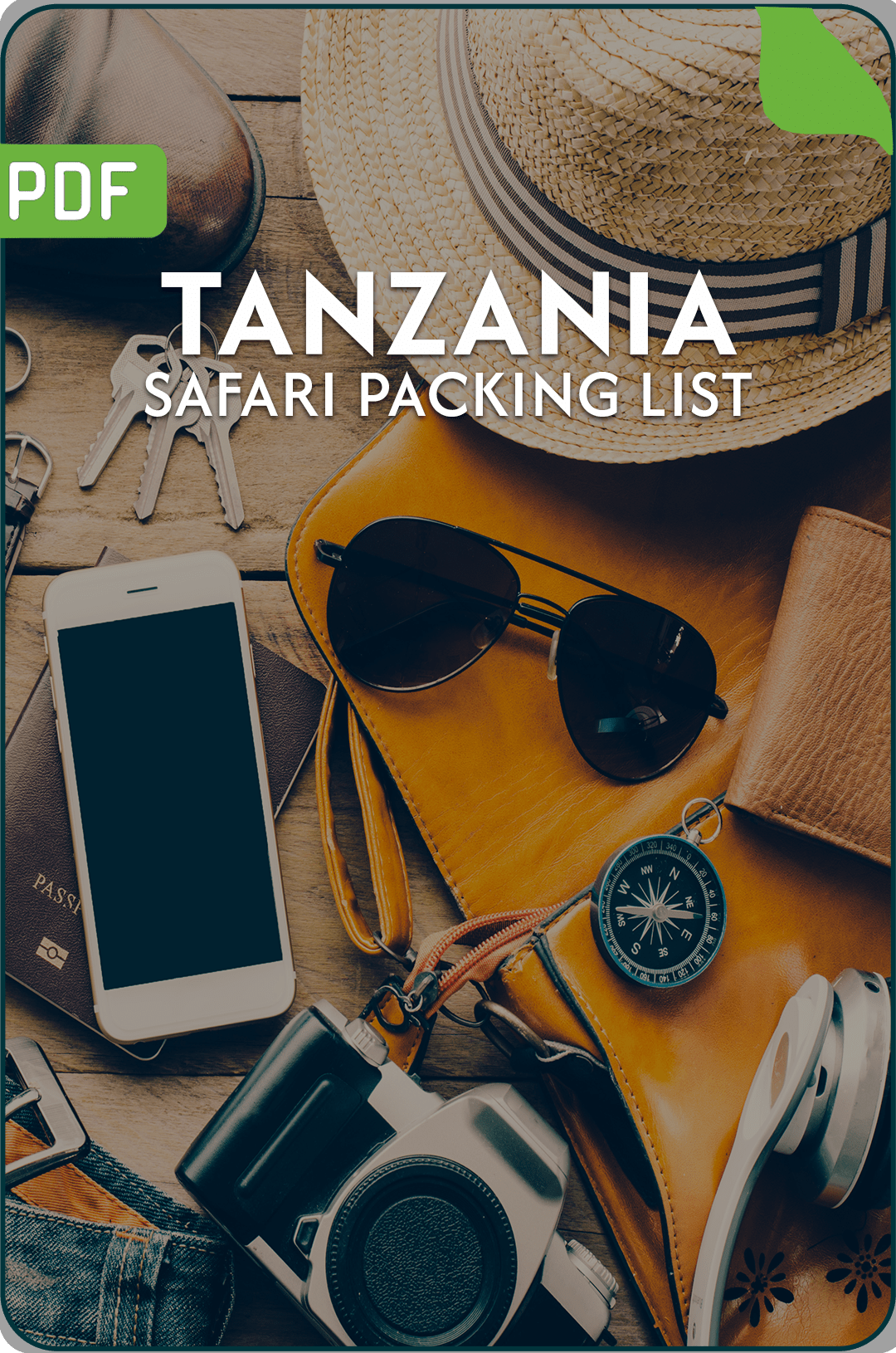
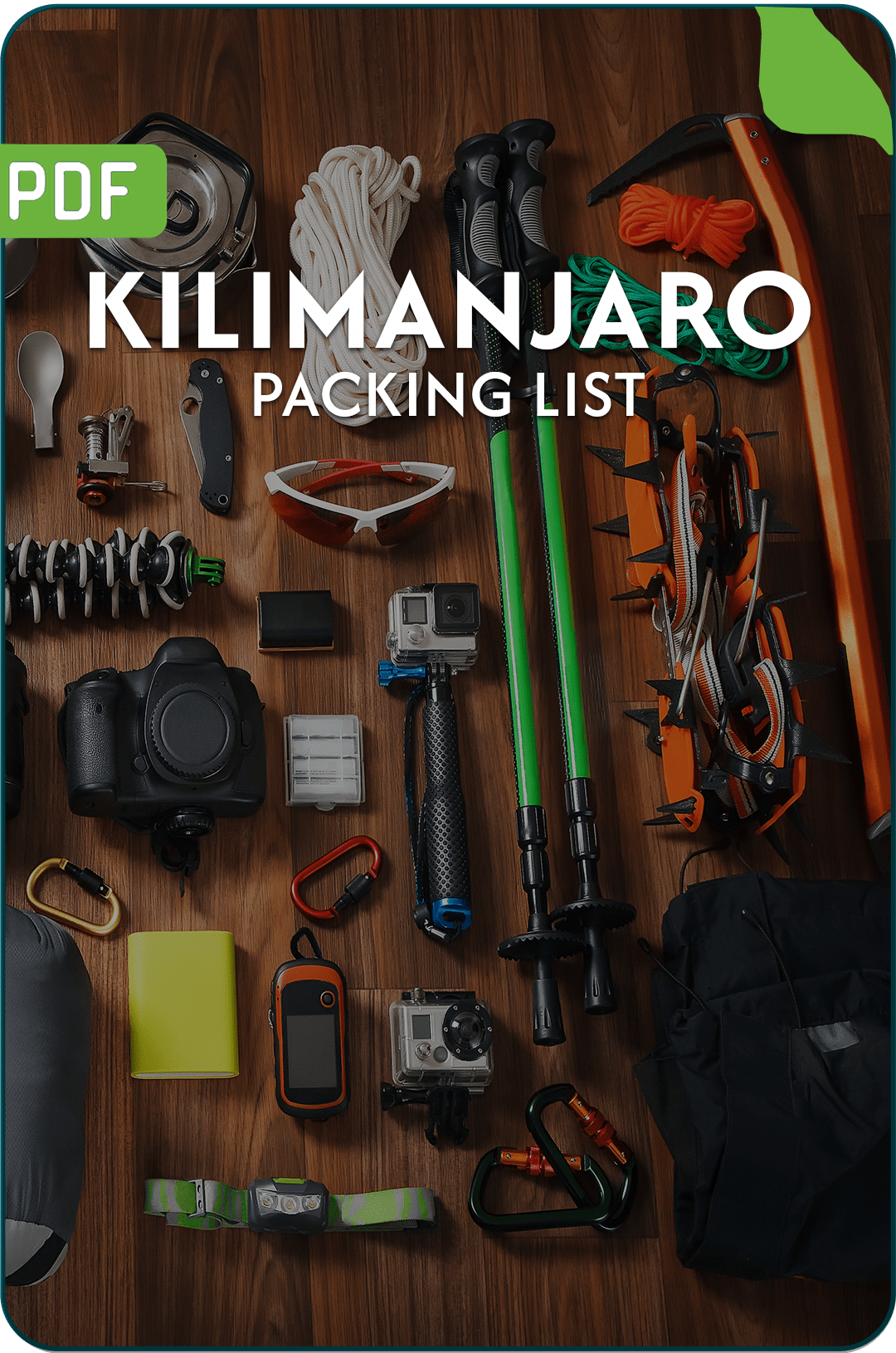
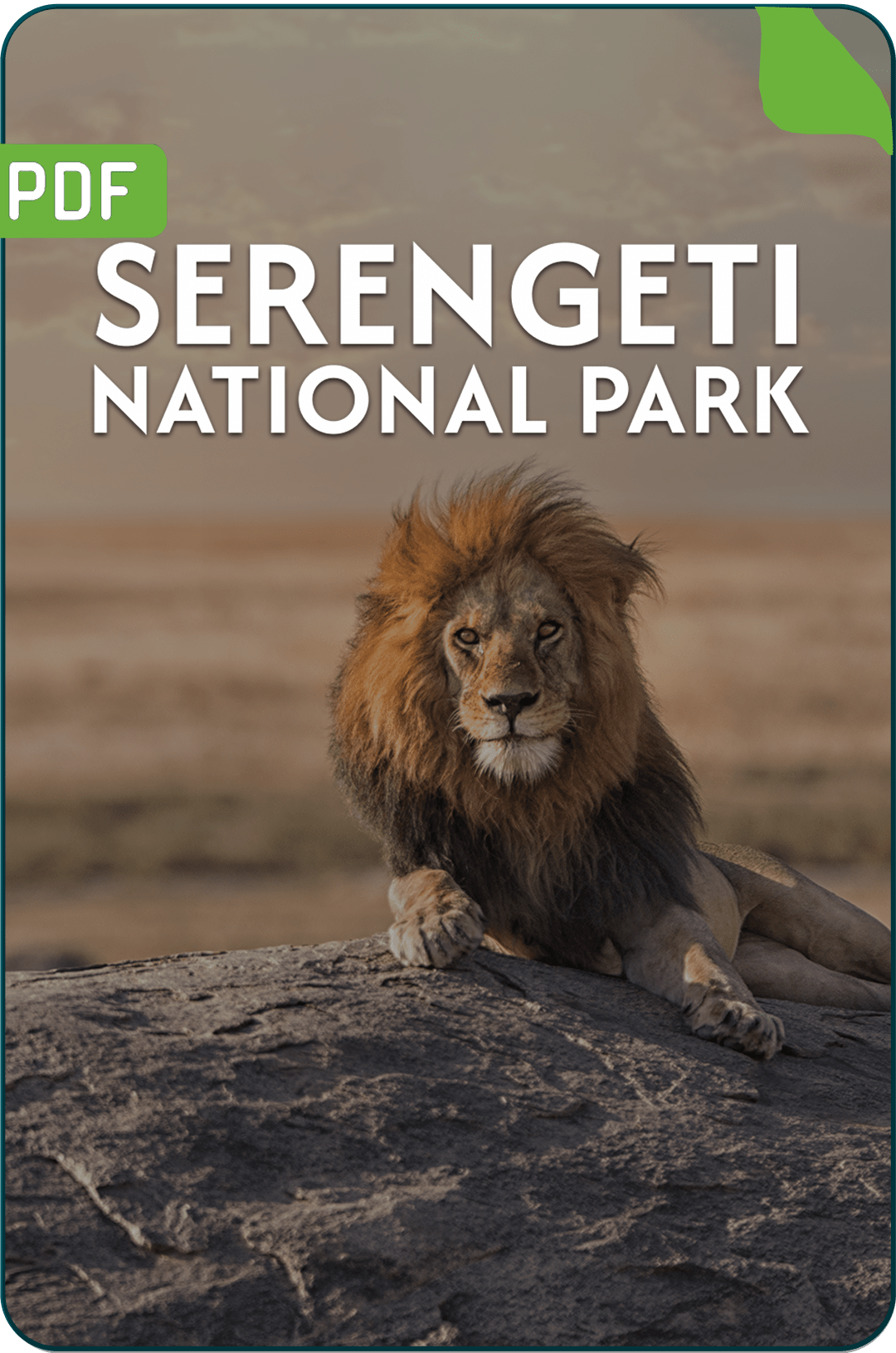
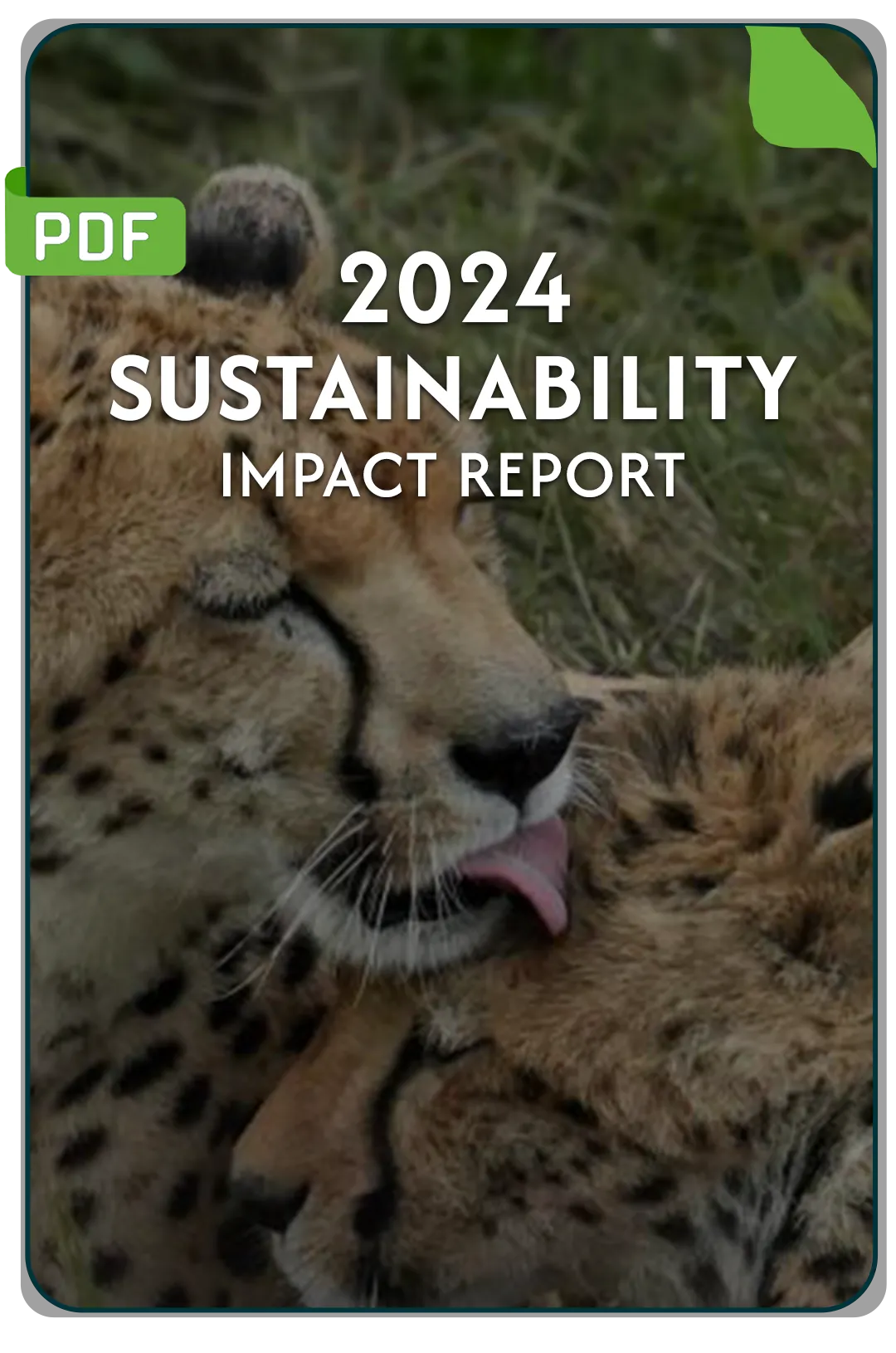
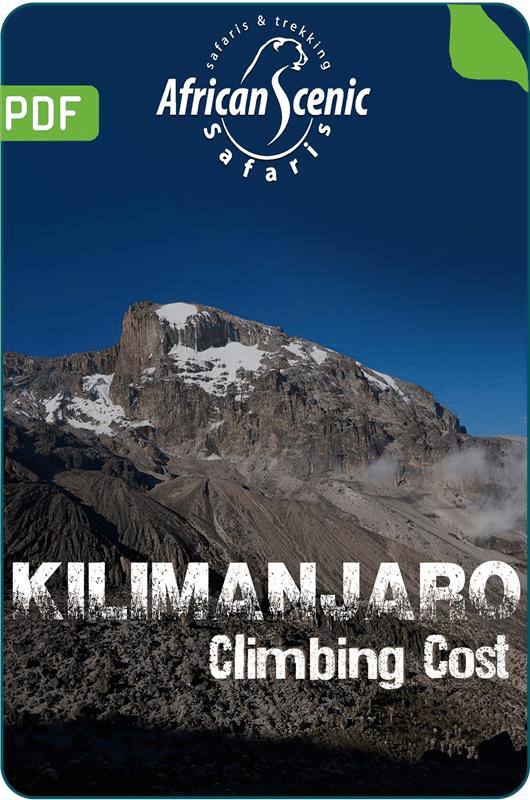





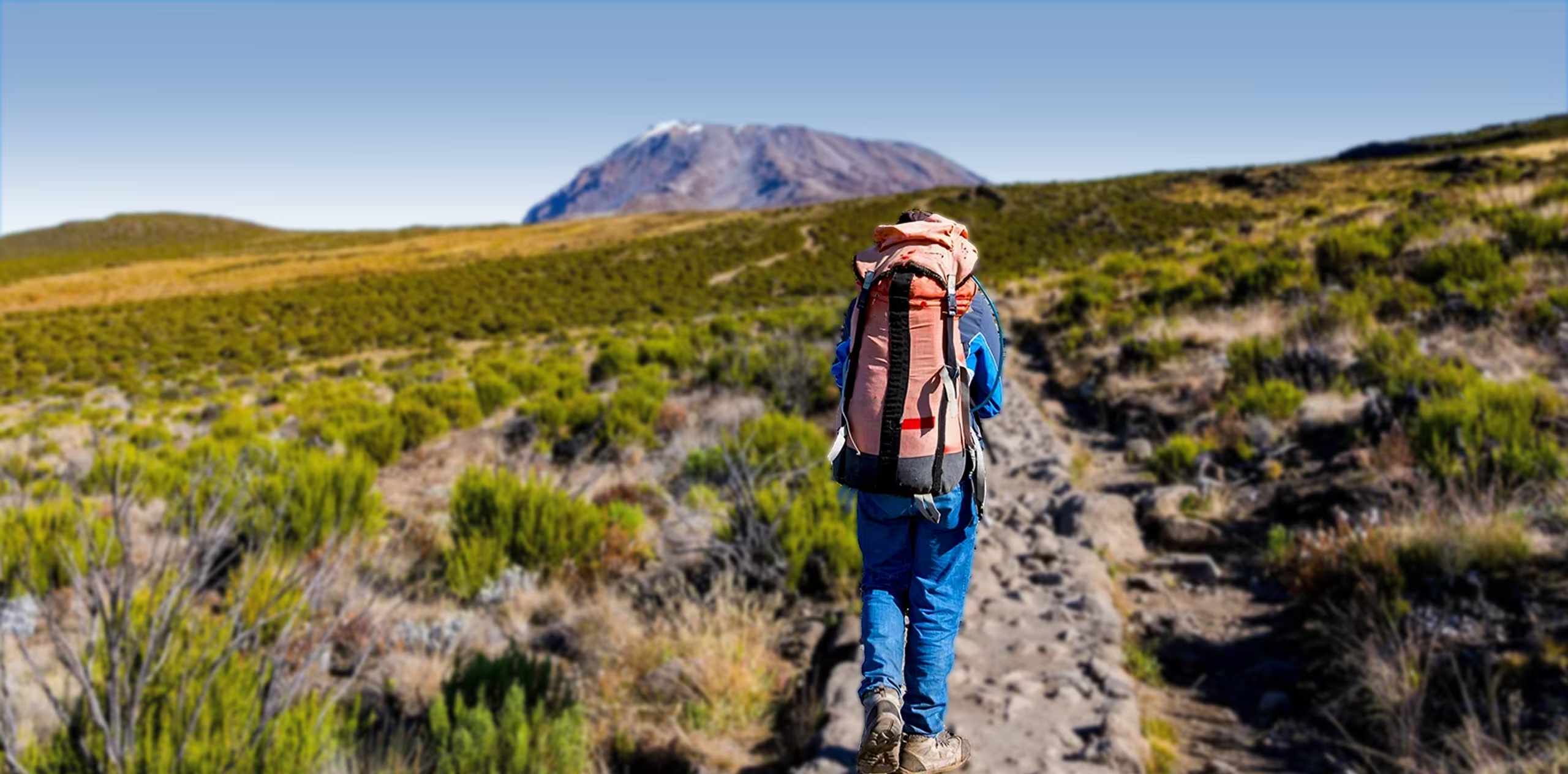
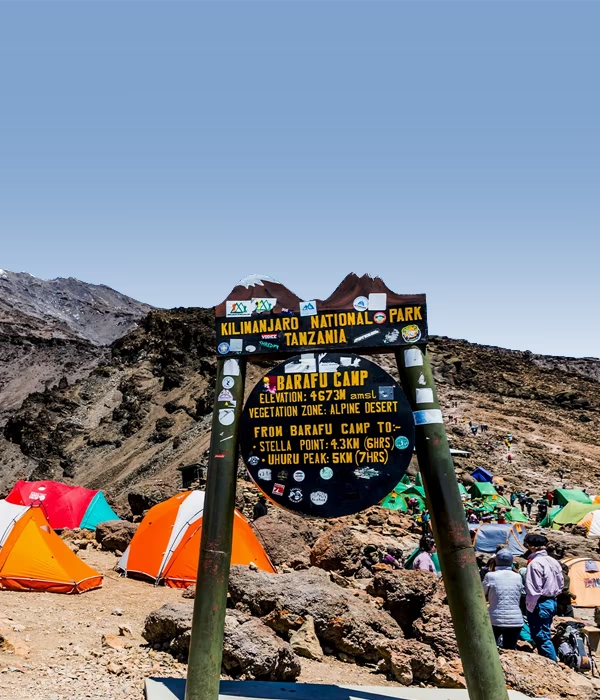
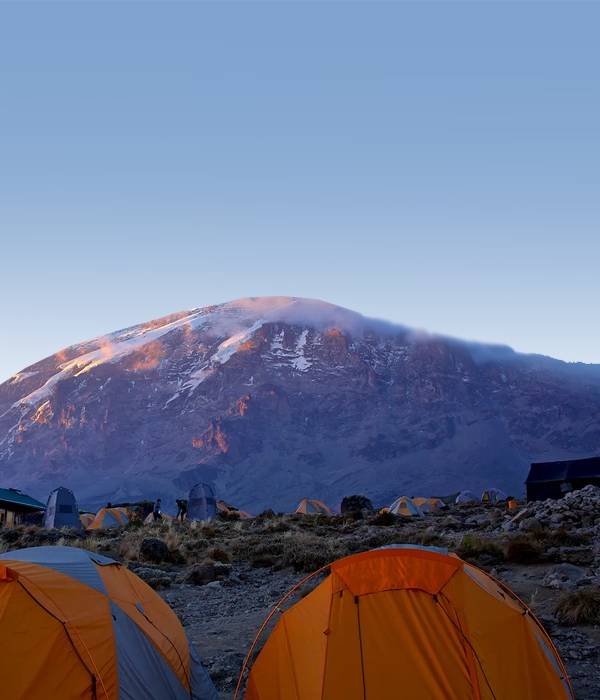
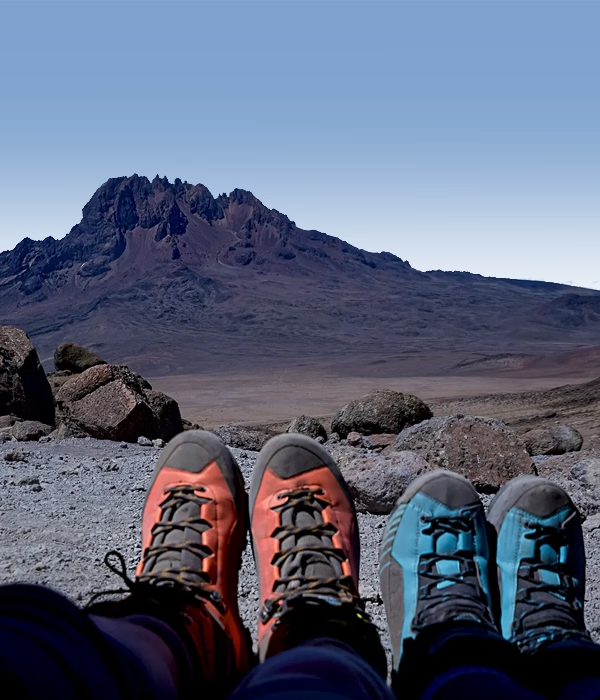
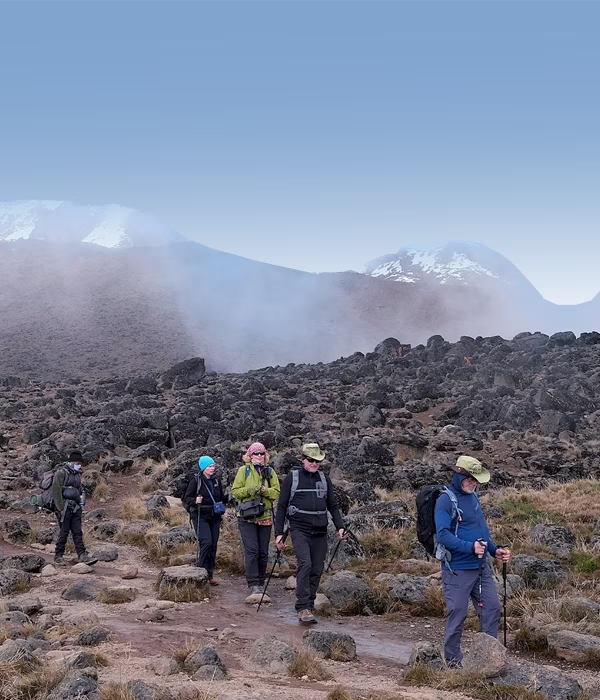




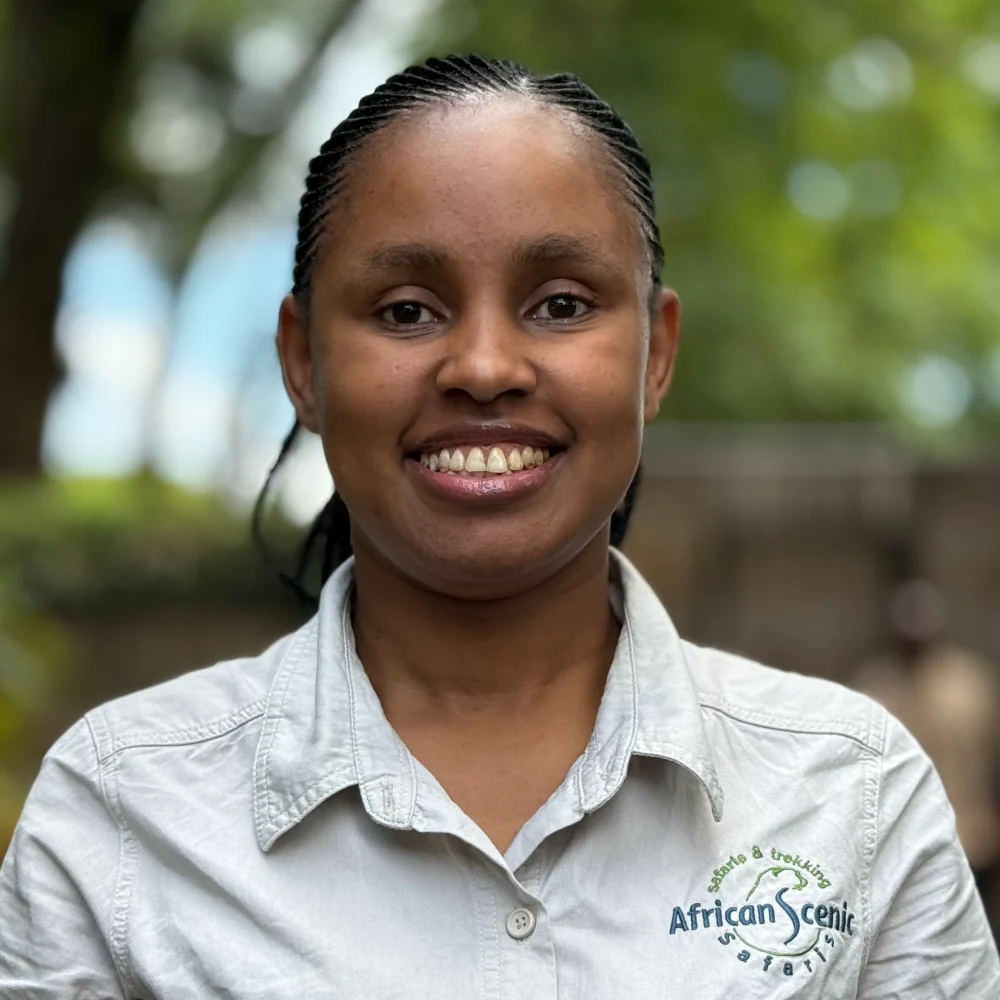
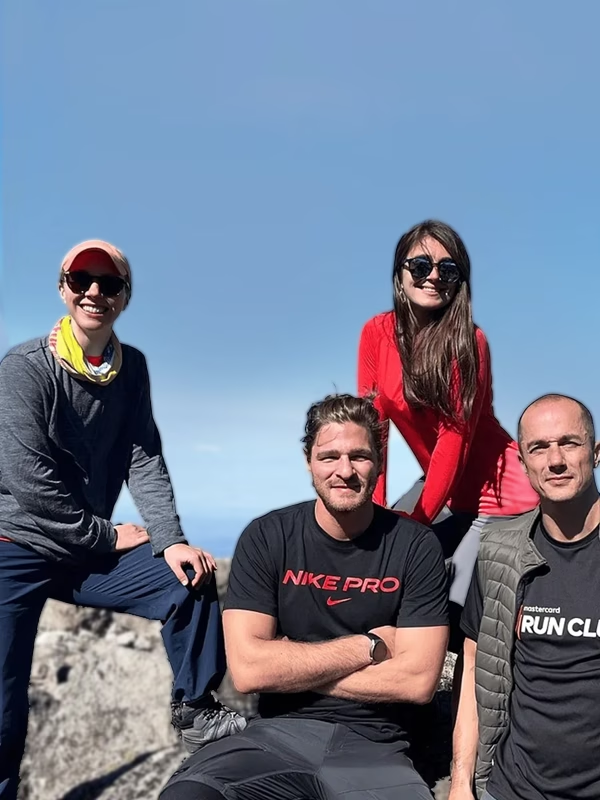
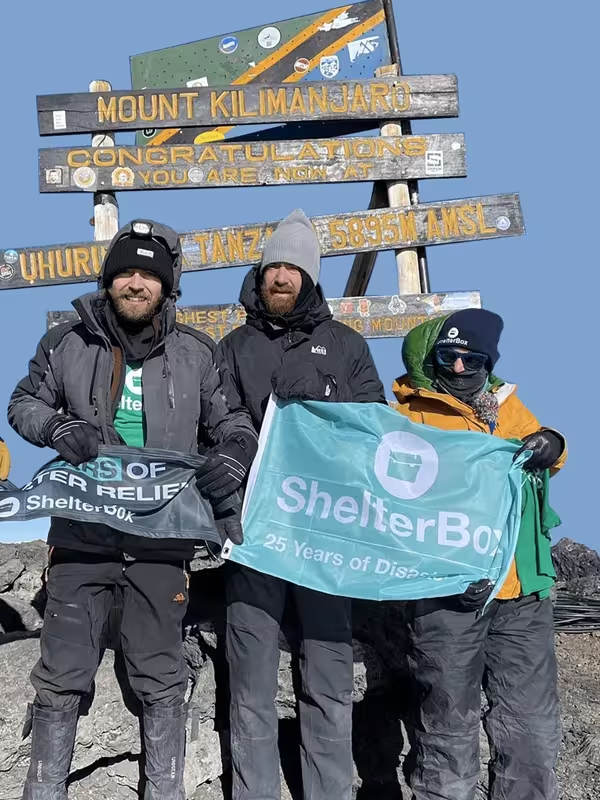
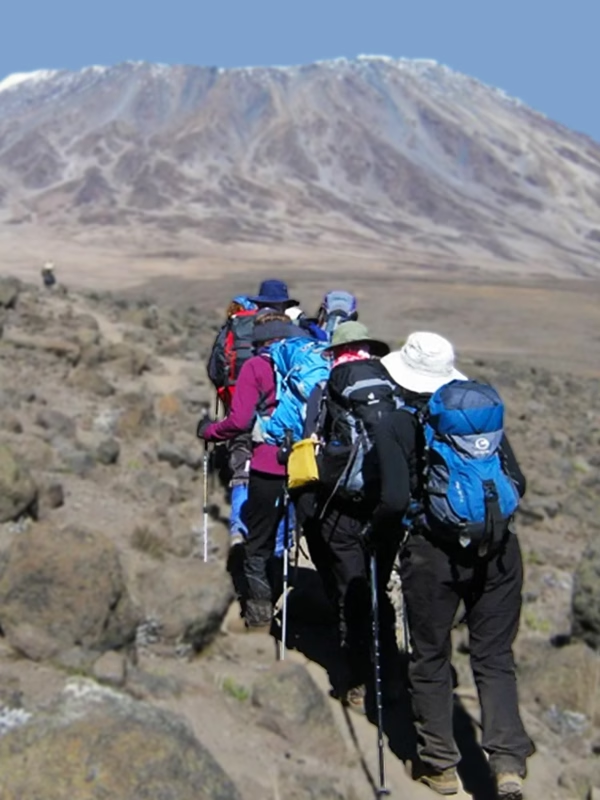
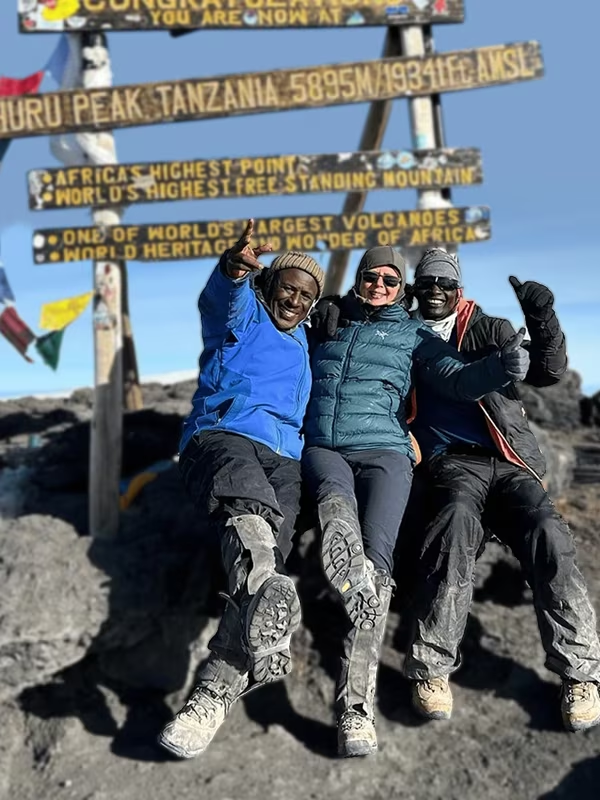
 African Scenic Safaris #1 on TripAdvisor
African Scenic Safaris #1 on TripAdvisor 
